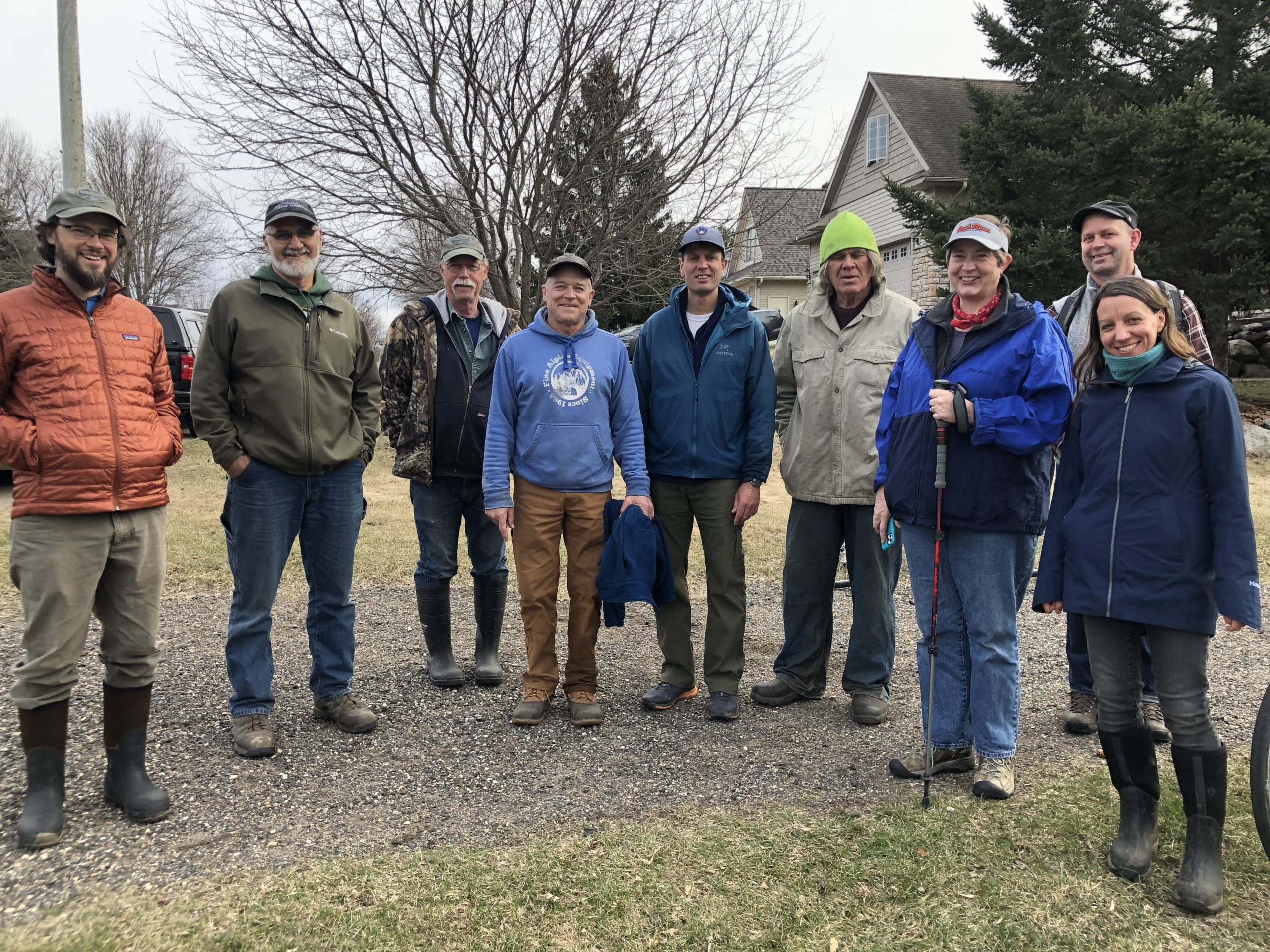Last year, the community of River Falls and supporters of the Kinnickinnic River came together to help the Kinnickinnic River Land Trust acquire a 40 acre parcel connecting City of River Falls park land to the River Falls School Forest. This parcel is now known as the Community Forest and is well-frequented by curious children, dog walkers and anglers alike. This land acquisition also opened up a potential roadway for River Falls students to access the School Forest from highway FF, just south of River Falls. After an uneventful ½ mile walk from highway FF, the easement trail branches off to the Community Forest and the confluence of the Kinni and Rocky Branch to the east, a highland field slated for prairie restoration to the north, and a ravine decent to a lovely bend of the Kinni on the western edge of the property. Currently, a diverse committee of school district staff, community stakeholders and resource professionals are volunteering their time and vision to develop trails, a land management plan, a nature center facility, and curriculum for RFSD teachers to get K-12 students out into the School Forest and down to the Kinni. Development on the property is stewarded through a conservation easement with KRLT. The School Forest will continue to offer public access to hikers and anglers and limited biking routes.
There will be a tour of the School Forest trails on Saturday, May 7th at 10:00 am. Please register at this link if you’re interested: School Forest walking tour
Organizational partnerships
Recently, a few Kiap-TU-Wish members met with Marty Engel and Julie Smith, land manager and executive director for the Kinnickinnic River Land Trust, as well as Judie Foster Babcock, president of the Kinnickinnic Corridor Collaborative to walk-and-talk along the the river trails connecting the Community Forest to the School Forest. Marty Engel shared his expertise and experience with us as both a land manager and a biologist. After appreciating the stream bank work done below trailhead 12 in the 1990s, we briefly discussed the potential need for river bank restoration below the Powell Falls dam after its removal. Moving downstream, Marty assured us that despite the messy appearance of log jams and high banks below the mouth of the Rocky Branch tributary, recent fish surveys confirm that the large woody debris provided by fallen trees (though we curse it for stealing our flies) provides excellent cover for our beloved trout. Plans are underway to move some trail segments away from the floodplain to avoid trail damage during floods and erosion at the river’s edge. We will also be working toward invasive species control and eventually getting students out to plant long-standing tree species. If you are interested in participating in restoration work parties next fall, contact Kiap board member Rainbow Barry at rainbowabarry@gmail.com.


